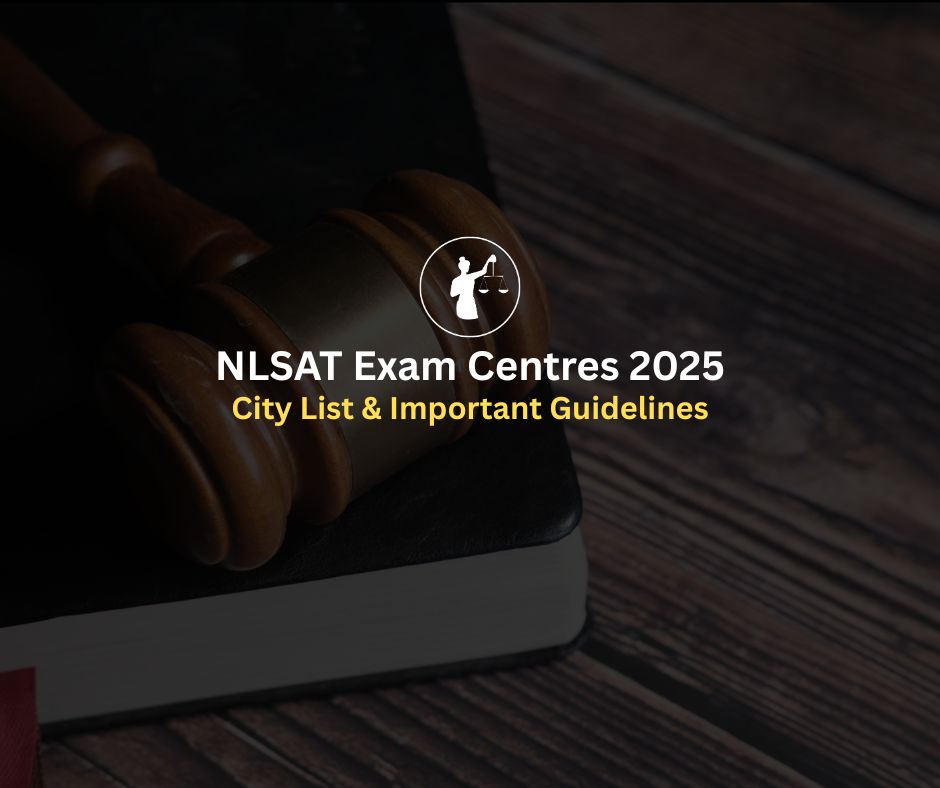
Many aspirants begin CLAT preparation with average mock scores, unclear routines, and scattered resources. The decisive difference between mid-rank and NLU selection is rarely raw intelligence; it is structure, feedback, and repeatable methods. NLTI’s mentorship model, mock ecosystem, and GK systems have repeatedly turned average starters into top rankers. This article maps three verified NLTI success stories, Shraff (AIR 9, CLAT 2025), Divas Upadhyay (CLAT 2024 AIR 38; AILET 2024 AIR 6), and Shreyans H Singh (AIR 30, CLAT 2025), and extracts the precise habits, coaching features, and progress patterns that created measurable CLAT coaching results.
Best CLAT Coaching Online 2026–2027 by NLTI
NLTI positions itself as a mentor-driven institute run by NLSIU alumni and students; the organisation reports over 100 NLS/NALSAR/NLUD selections and more than 500 selections across NLUs in its public material, and highlights that recent batches included multiple high NLSIU and AILET ranks. These aggregate results frame the case studies below: NLTI’s systems are proven at scale, not anecdote.
NLTI’s model is repeatedly referenced by its toppers and testimonials. The elements that show up across NLTI success stories are:
1. Mentor-first coaching: NLTI uses NLSIU mentors for 1:1 and group review sessions, which faster exposes thought-flaws and test-day strategy gaps.
2. Robust mock ecosystem: NLTI offers an integrated mock test program (50 CLAT mocks, 10 AILET mocks, 10 OLET mocks, 100 sectionals on their platform) that replicates real exam pacing and difficulty.
3. GK Booster & curated current affairs: NLTI’s GK Booster and fortnightly GK Gazette reduce noise and let students revise high-impact items efficiently.
4. Daily doubt clearing & peer groups: Telegram support plus study-buddy groups maintain momentum and accountability.
These features are central to the trajectories documented below.
Read More: Live Classes vs Recorded Modules: Best for CLAT Prep
NLTI interventions used: Falcon batch for structure, intensive Legal-principle practice modules, weekly 1:1 mentor calls focusing on time-allocation and attempt selection, and adaptive mocks with targeted feedback.
Practical changes and results (what to replicate):
Mock analysis over volume: Shraff converted every mock into a 90-minute analysis session, categorizing errors (conceptual, carelessness, time-loss) and implementing micro-drills from those categories in the following week.
Legal as high-yield anchor: Using NLTI’s principle bank and mentor-led Legal clinics, he improved Legal accuracy dramatically, converting the section into 35–40 reliable marks.
Time discipline: A fixed attempt order and 3-minute passage cap in Logical prevented mid-test fatigue.
Outcome: Consistent mock scores above 105 in the final months and a disciplined exam approach delivered AIR 9. NLTI’s mock + mentor loop was explicitly credited in NLTI’s CLAT 2025 report.
Starting point: Strong fundamentals but needed exam-specific conditioning for two different tests (CLAT and AILET). NLTI’s platform helped Divas craft parallel strategies rather than a one-size-fits-all plan. NLTI lists Divas among its AILET/CLAT achievers and includes his testimonial on the main site.
NLTI interventions used:
Dual curriculum mapping: Separate modules for CLAT’s reasoning-heavy pattern and AILET’s static + accuracy demands.
GK cadence: NLTI’s GK Booster and fortnightly GK Gazette ensured Divas retained legal and national policy items with minimal time.
Exam simulation: Frequent AILET-style sectionals plus CLAT full tests avoided confusion between test styles.
Outcome: Dual success, with AILET AIR 6 and CLAT AIR 38 demonstrating how NLTI’s course architecture supports multi-exam candidates. Divas’s profile and quote are featured among NLTI testimonials.
Read More: Adaptive Tests & Personal Feedback in CLAT 2026 Coaching
Starting point: Mid-50s to low-60s in early tests; particular friction in Quant and English.
NLTI interventions used: Micro-scheduling (short, high-intensity sessions), recorded content for targeted rewatch, weekly mentor checklists for error patterns, and focused quant DI drills from NLTI’s practice bank.
What changed:
Micro-block study: 25–40 minute focused bursts on single skills prevented fatigue and improved retention.
Mock + error-log discipline: Every mock fed a personalized error log; NLTI mentors turned those logs into a weekly action plan.
Selective practice in Quant: Instead of broad problem volume, Shreyans solved tightly curated DI and approximation sets that approximated CLAT pacing.
Outcome: Clear, steady gains in accuracy and time-management led to AIR 30 in CLAT 2025, another documented result in NLTI’s 2025 list.
NLTI lists multiple student testimonials and outcome claims on its homepage and blogs. Notable excerpts and figures on the NLTI site include:
Selections: NLTI reports over 100 NLS/NALSAR/NLUD selections and 500+ selections across NLUs in its public copy, a headline figure showing institutional scale.
Batch highlights: NLTI’s 2025 batch reportedly delivered more than 15 NLSIU selections and 25 NLU-Delhi selections and “over 200 selections across NLUs” for that cohort, emphasizing recent cohort performance.
Topper lists & testimonials: NLTI’s CLAT 2025 topper list names multiple ranks (including AIR 22, AIR 23, AIR 30, and others) and the site publishes individual interviews/testimonials (e.g., Divas Upadhyay, Saher Gole for AILET).
These published claims and testimonials show NLTI’s outcomes are both granular (individual topper pages) and aggregated (selection totals and cohort highlights). Use these figures as institutional context when showcasing NLTI’s role in the success stories above.
Read More: CLAT 2026: Scoring, Negative Marking, Cutoffs & Tie-Breakers
Across NLTI’s testimonials and topper interviews, the same repeatable practices surface:
1. Mentor-driven correction loops: Regular NLSIU mentor sessions that target recurring error types (conceptual vs. execution).
2. Adaptive mocks with analytics: Mocks that not only score but show time-spent, section pace, and question-level error trends.
3. GK curation: Fortnightly and monthly GK packs (NLTI’s GK Booster) compress the most test-relevant material.
4. Community & accountability: Study-buddy groups and live doubt sessions prevent isolation and amplify steady effort.
These are not marketing claims alone, they match the learning behaviours documented in NLTI’s student interviews and result pages.
Read More: Free vs. Paid CLAT Online Coaching: What Works Better?
Treat mocks as the primary learning engine, invest 1.5x time in analysis for each mock.
Make Legal your anchor, use principle-banking and 3-minute passage drills.
Adopt micro-schedules if you face fatigue or time constraints.
Use curated GK packs (like NLTI’s GK Booster) to avoid noisy, low-yield revision.
Use mentorship early, don’t wait until final months for structured feedback.
NLTI’s publicly documented results, topper pages, and detailed testimonials demonstrate a consistent methodology: mentor-led, mock-centric, and GK-curated preparation that produces measurable CLAT coaching results. The three NLTI stories above, Shraff (AIR 9), Divas Upadhyay (CLAT 38; AILET 6), and Shreyans H Singh (AIR 30), are concrete examples of how average scores turn into NLU ranks when structure, targeted feedback, and consistent execution meet. NLTI’s site further documents cohort-level selections (100+ NLS/NALSAR/NLUD and 500+ across NLUs) and dozens of testimonials that corroborate these learning patterns. For aspirants aiming at CLAT 2026, NLTI’s model shows that high-rank outcomes are reproducible, not accidental.
1. What common habits do CLAT toppers develop during preparation?
Most toppers follow a fixed reading routine, maintain an error log, analyze every mock in detail, and revise GK consistently. These habits appear repeatedly across high-rank CLAT success stories.
2. Can an average-scoring student realistically reach a top NLU?
Yes. Many CLAT topper journeys show students rising from mid-range mock scores to top 100 ranks by improving accuracy, refining strategy, and following structured feedback consistently.
3. What role does mock analysis play in CLAT rank improvement?
Mock analysis helps identify recurring mistakes, track timing patterns, and improve decision-making. Toppers often credit mock analysis as the single biggest factor behind their CLAT coaching results.
4. Do toppers focus more on accuracy or attempts?
Toppers prioritize accuracy first, typically maintaining 80–90% accuracy. High attempt count comes only after accuracy stabilizes over several mock cycles.
5. Are topper strategies different for CLAT and AILET?
Yes. Toppers usually follow a reading-heavy and logic-driven approach for CLAT, while AILET preparation requires deeper RC practice, vocabulary strength, and longer endurance for a 120-minute paper.
6. What mindset shift helps students move from average to top ranks?
Toppers consistently shift from marks-chasing to process-focused preparation, emphasizing daily discipline, consistency, and long-term planning over short-term score fluctuations.




